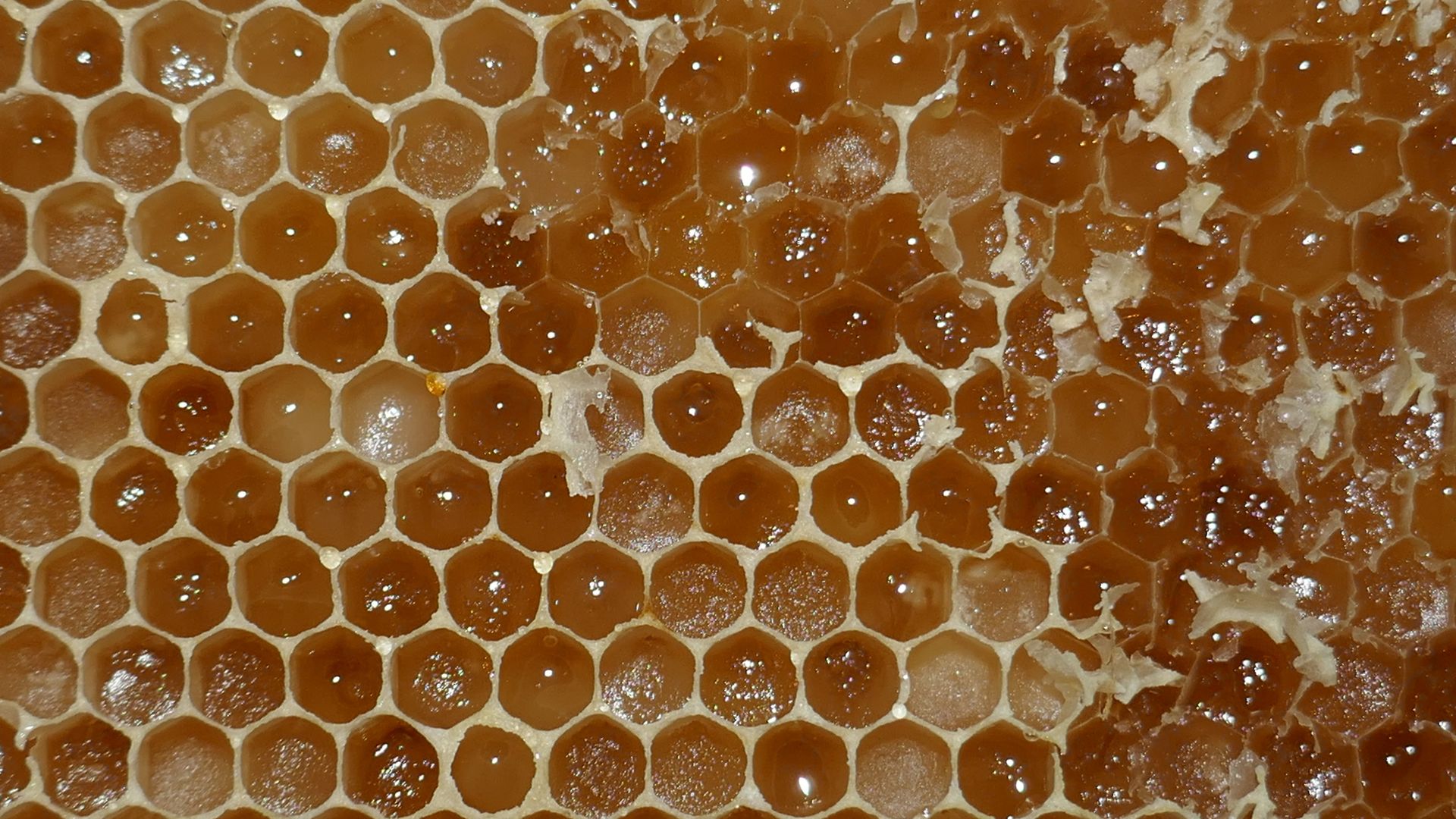
© Agroscope
Melezitose honey or cement honey, is a granulated honey with very high content of melezitose. In 1984, the honeydew honey in different districts of the canton of Berne (Switzerland) could be harvested only with great difficulty or could not be harvested at all. We studied the effects of this honey on the overwintering of bee colonies and on their development in next Spring. In other years there was also melezitose honey at different places in Switzerland, e.g. in 1999. The experiences of 1984 can help beekeepers to find appropriate solutions if there is flow of such honey in the future. However, similar problems can arise, if colonies hibernate without additional feeding with sugar feed. Therefore, it is important, that brood combs full of honeydew honey be replaced by empty combs or foundations. In this way overwintering problems can be avoided.
The honey in this comb contains more than 20% melezitose and thus can not be extracted via centrifuge.
Colonies, that hibernate only on melezitose containing feed will perish during the winter or during the following spring.





